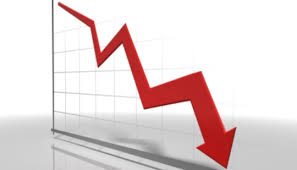Euro area inflation re-entered negative territory in February

February Headline / Core (y/y)
Actual: -0.2% / +0.7%
Barclays: -0.1% / +0.9%
Consensus: +0.0% / +0.9%
Soft across the board
Euro area headline HICP inflation re-entered negative territory in February, plunging 0.5pp, from +0.3% to -0.2%. The print came in even softer than our below-consensus projection. Weakness was broad-based across components as both core and non-core prices declined (on a y/y basis). The fall in the latter looks particularly concerning, in our view. Even assuming that part of the downward surprise in core inflation was seasonal-biased due to different sales and Easter time versus last year, we believe that the February print is a weak one which is likely to attract the ECB’s attention. In particular, we expect the drop in NEIG prices (-0.4pp) to be highly scrutinised as last year’s modest recovery in core inflation was primarily driven by the tradable goods component which was supported by combined demand (durable goods consumptions) and currency factors.
We remain of the view that the ECB is unlikely to overreact at next week’s meeting (10 March) as the details of the inflation release will only be available at a later stage (17 March). That being said, we believe the risks surrounding our expectation that the ECB will cut the deposit rate by 10bp and fine tune some technical aspects of QE (but not the size) are slightly tilted towards the implementation of bolder actions. As part of our baseline, we also expect the ECB to deliver another 10bp depo rate cut in June, bringing the deposit to -50bp. Therefore we would expect President Draghi at the March meeting to leave the door open for further action, including the possibility of a multi-tiered system to mitigate the impact of negative rates on banks.
Relative to our forecast, the surprise in core inflation was in magnitude rather than in composition
Both NEIG and services prices declined, but much more than what we had expected. We think it will be critical to watch final data (17 March) to assess the extent to which the drop in core inflation may revert in coming months. While in fact some of the decline was likely driven by seasonal factors affecting non-durable goods prices and/or air fares/package holiday prices, we believe that it is unlikely to revert entirely. As we wrote in Euro area: Unsatisfactory W-inflation , we remain of the view that NEIG price momentum is likely to lose steam this year primarily due to negative base effect. Therefore, we have put our projected core inflation profile (2016: +1.1% and 2017: +1.2%) under review, alongside our headline profile (2016: +0.1%, 2017: +1.3%) as broad-based (albeit different in nature) downside risks stemming primarily from energy, unprocessed food and NEIG prices we identified before continue to loom.
The February print in more details (Figure 1)
Core inflation fell by 0.3pp to +0.7% driven by a sharp drop in NEIG prices and services inflation, while also energy and food prices continue to plunge, the latter driven by the unprocessed food component. NEIG prices contracted by 0.4pp to +0.3% y/y, while services inflation declined 0.2pp to +1.0% y/y, 0.4pp above and 0.2pp below the inflation rates recorded in February last year respectively. At the non-core level, energy prices plunged to -8.0% y/y from -5.4%, while food, alcohol and tobacco prices declined 0.3pp to +0.7% y/y driven by unprocessed food inflation which plunged to +0.3% y/y from +1.4% previously.
Barclays
Economic Research

